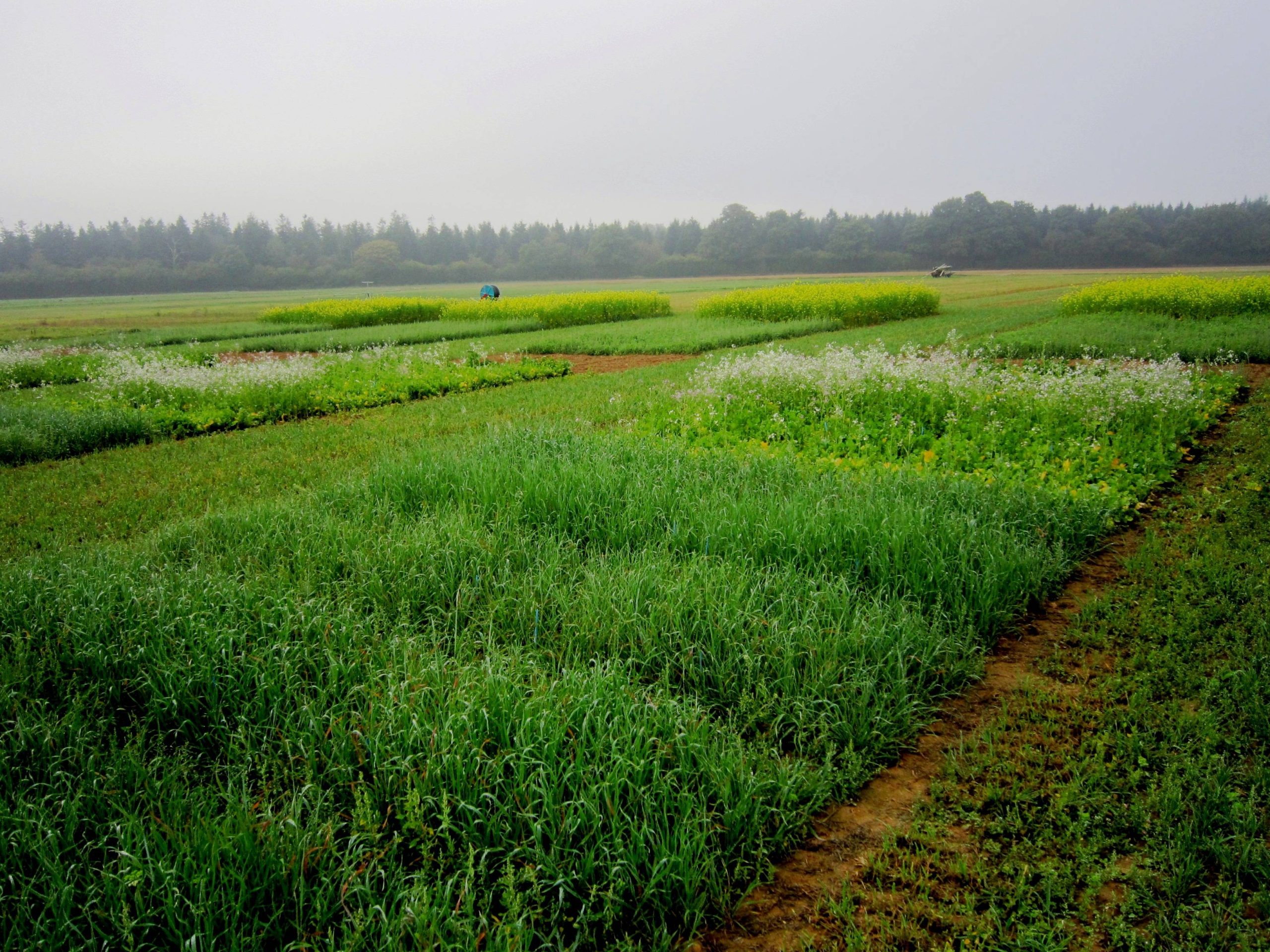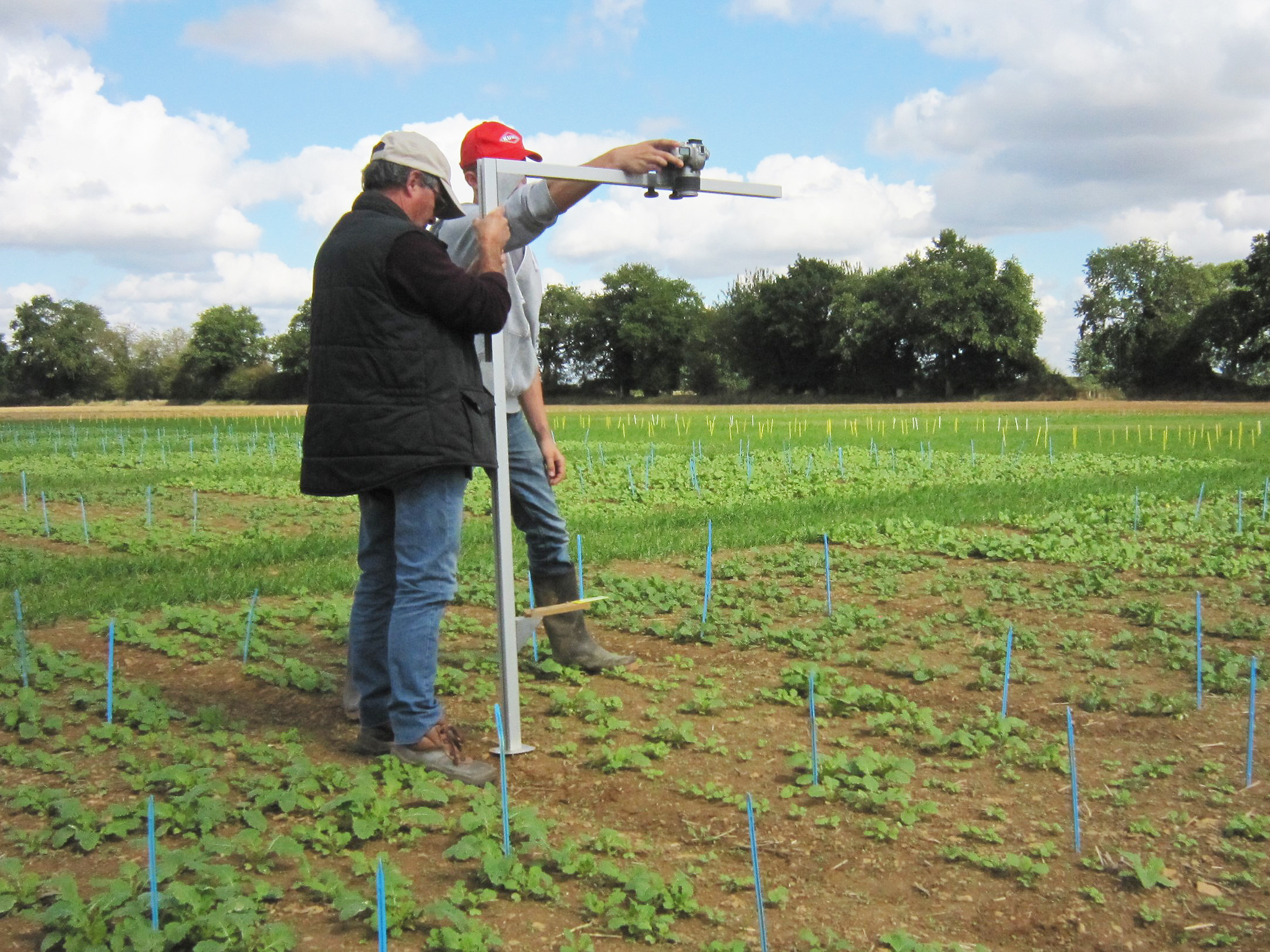Registration of Service Plants in the French Catalogue
Before a new variety can be placed on the market in France, it must be registered in the Official French Catalogue of species and varieties, also known as the National Listing. The registration of a variety is decided by the Ministry of Agriculture based on proposals from the French Technical Committee for Plant Breeding (CTPS). These proposals are obtained on the basis of studies carried out by GEVES for the CTPS.
Service Plants Cross-Sectional Commission (CISPS)
Within the CTPS, a special committee is responsible for the VCUS testing of service plant varieties. This committee, called the Service Plants Cross-Sectional Commission (CISPS), is cross-disciplinary; its members are drawn from different CTPS sections which are divided according to botanical species group. The CISPS is responsible for defining and implementing testing regulations and methods, with a view to encouraging the development and use of service plants.

Its concrete objectives are to:
- Elaborate technical methods, protocols and results levels to meet breeders’ needs
- Evaluate the admissibility of variety applications in light of the information and technical results provided
- Determine data control procedures for data provided by applicants, and implement protocols and official experimentations to test the variety’s response to the claimed services and ensure the absence of disservices
- Examine data and validate results obtained by GEVES following two years of VCUS testing, and announce the VCUS approval or refusal of the variety.
Registration on list A of the French Catalogue
A specific VCUS protocol for service plant varieties
The first version of the VCUS protocol is now available to applicants via the French Catalogue. It includes common information for all tests, and specific annexes for each species and/or service. It details the experimental procedures conducted for different services, and can be used as a reference tool by breeders and applicants looking to build a clear and comprehensive technical application.
Admissibility of VCUS applications for service plants
Before launching the VCUS testing of a plant variety, the CISPS decides on the admissibility of the application, and whether the CTPS is able to carry out the variety study for the indicated service. The registration application must be submitted before the closing date and according to the instructions of the appropriate DUS Section.
If there is no method or means of evaluation for the indicated service, the application can be rejected as non-admissible. If the character of the service is potentially innovative, this could alter the possibility of refusal. In this case, the applicant must provide additional information in order to examine the methodological and economical feasibility of testing the variety, and propose a suitable testing protocol.
Official testing takes places over two VCUS cycles. To minimise administrative delays, applicants are encouraged to anticipate their intentions to file an application, and to prepare a technical file in accordance with the current VCUS protocol for service plants (for informational purposes only, this does not reduce the testing duration).
Decision rules for registration on list A
Just as for varieties for conventional use, service plant varieties must undergo DUS and VCUS testing, and be designated by an approved denomination in order to quality for registration. Following these official tests, the CISPS provides a recommendation on the VCUS admission, refusal or postponement of varieties.
The varieties listed below are registered on list A under the “Service Plants” category (UPS):
| Species | Denomination | Year of registration | Generic use(s) and specific mention(s)
|
| Bristle oat | Altesse Avelux Cadence Delux Fregate Iapar 61 Jumper Luxurial Oceane Panache Roxane Spirale Toscane | 2015 2015 2012 2017 2015 2015 2017 2012 2015 2012 2017 2017 2017 | Intermediate nitrate trap crop Intermediate nitrate trap crop Intermediate nitrate trap crop Intermediate nitrate trap crop Intermediate nitrate trap crop Intermediate nitrate trap crop Intermediate nitrate trap crop Intermediate nitrate trap crop Intermediate nitrate trap crop Intermediate nitrate trap crop Intermediate nitrate trap crop Intermediate nitrate trap crop Intermediate nitrate trap crop |
| Forage radish | Adios Cannavaro Carwoodi Doublet Iris Melotop Mercator Triangel | 2003 2014 2005 2007 1983 2008 2013 2018 | Intermediate nitrate trap crop Intermediate nitrate trap crop (1) Intermediate nitrate trap crop (3)(4) Intermediate nitrate trap crop (2)(3)(4) Intermediate nitrate trap crop Intermediate nitrate trap crop (2)(3)(5) Intermediate nitrate trap crop (1) Intermediate nitrate trap crop (1) |
| White mustard | Achilles Bardavos Cabri Carabosse Cargold Caribella Carla Carline Carnaval Emergo Floraine Ludique Metex Sirene Sito Venice Verdi | 2003 2017 1997 2007 1994 2003 1984 2008 1992 1984 2018 2000 1991 2012 1996 2016 2017 | Intermediate nitrate trap crop (1) Intermediate nitrate trap crop (1) Intermediate nitrate trap crop Intermediate nitrate trap crop (2) Intermediate nitrate trap crop (2) Intermediate nitrate trap crop (2) Intermediate nitrate trap crop Intermediate nitrate trap crop (2) Intermediate nitrate trap crop (2) Intermediate nitrate trap crop (2) Intermediate nitrate trap crop (1) Intermediate nitrate trap crop (2) Intermediate nitrate trap crop (2) Intermediate nitrate trap crop (1) Intermediate nitrate trap crop Intermediate nitrate trap crop (1) Intermediate nitrate trap crop (1) |
| Brown mustard | Goldperf | 2018 | Intermediate nitrate trap crop |
- Classification H1, variety considerably prevents multiplication of Heterodera schachtii nematode
- Variety prevents multiplication of Heterodera schachtii nematode
- Variety prevents multiplication of Meloïdogyne chitwoodi nematode
- Variety prevents multiplication of Meloïdogyne fallax nematode
- Variety partially prevents multiplication of Meloïdogyne fallax nematode
Find out more
- Register a variety in the French Catalogue
- Search the Catalogue
- Consult a document (protocols, technical regulations, VCUS results…)


